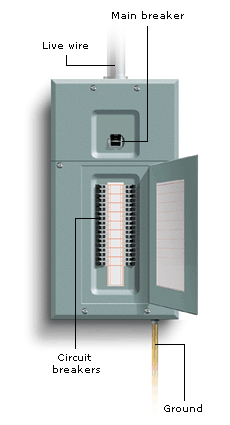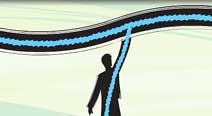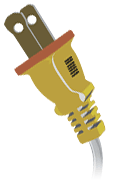Electricity Consumption
Electrical Distribution Panel

- Find out more!
 Here's a fun way of learning to play it safe
Here's a fun way of learning to play it safe
The meter is connected to a distribution panel, also known as the breaker panel. This apparatus has a main breaker, which can cut power to the entire house, and as many circuit breakers as there are circuits in the house.
Breakers are switches that automatically cut off electric current when an overload or some other anomaly occurs. They prevent circuits from overheating, for instance because of a wiring problem or a defective appliance. Each breaker is linked by three wires to a series of outlets or connection boxes along a circuit.
The live or "hot" wire delivers electric current. The neutral, or "return," and the ground have a safety function. The neutral and the ground are hooked up to the same breaker terminal, which is connected to the grounding system of the distribution panel.
Some dedicated circuits have only a single outlet or connection box–for example, the refrigerator and the water heater. Other circuits are wired to outlets with ground fault circuit interrupters, such as bathroom outlets, to provide added protection against electricity-related accidents in the home.

Why do the plugs of many electrical appliances have a hole in each prong?
These holes prevent the plug from coming out of an outlet too easily. When inserted in an outlet, the prongs are wedged into position by small bulges on each contact that fit snugly into these holes. Sometimes a plastic tie-wrap is inserted in these holes to prevent the appliance from being plugged in.

